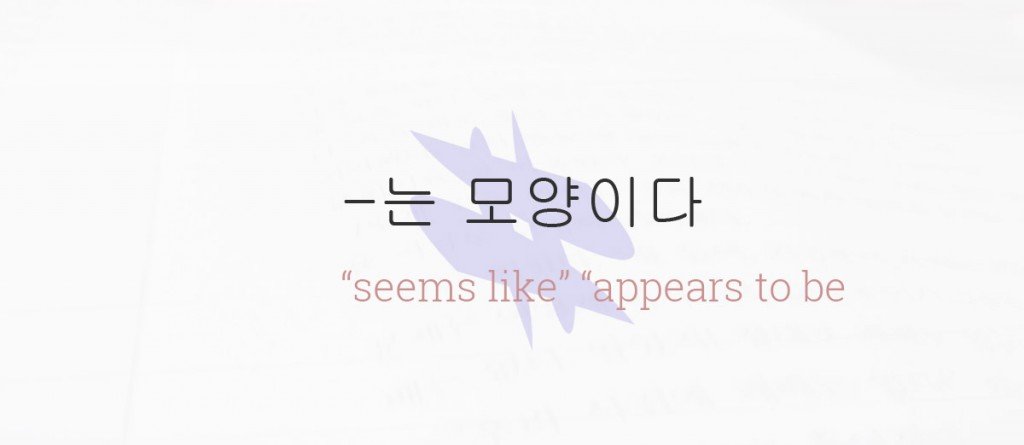– ㄴ / 은 / 는 모양이다 Grammar Lesson “appears to be”
– ㄴ / 은 / 는 모양이다 “appears to be” “seems like”
곧 봄이 올 모양이다
= Spring seems to be just around the corner
Yes that’s right! Spring seems just around the corner and what way is better to celebrate that than with a grammar lesson? Today we will take a look at the -은 / 는 모양이다 grammar pattern, which is used to express supposition or speculation based on facts or the appearance of a situation. It is similar to “것 같다” but with some notable differences which are explained below.
Usage
- AVST (Past / Present / Future) + ㄴ / 은 / 는 / 을 모양이다
- DVST (Past) + 았던 / 었던 / 였던 모양이다
- DVST (Present / Future) + 은 / 을 모양이다
- N (Past) + 이었던 / 였던 모양이다
- N (Present) + 인 모양이다
A Closer Look
모양 – outward shape, form or appearance.
모양 on its own means to “shape” or “appearance” so this pattern translates somewhat literally to “has the shape/form of VST.” In English, that sounds really awkward and “looks like” or “appears to be” are more suitable translations. But it hints at something important.
When you use this grammar pattern, the supposition you make must be based on something you’ve actually seen and know.
- It is sometimes used with with 을 보니 / 보니까 or 걸/ 걸로 봐서 appearing earlier in the sentence. This means “from/after seeing (I realize)….” Check below for an example!
Difference between -는 모양이다 and -것 같다
While the meaning is almost identical to that of the pattern -것 같다, there are reasons why you would use one over the other. For example
- When you are talking to someone and making suppositions about them based on their own appearance, using 은 / 는 모양이다 will make it sound like it’s based on their appearance or other facts while -것 같다 tends to sound more “neutral” in regards to the basis of the supposition.
- -는 모양이다 can only be used when the supposition is based on fact or an observation.
- -는 모양이다 can only be used when the supposition is of objective nature . When the guess is subjective (like guessing quality or skill level), you have to use -것 같다.
Examples
밖을 보니까 비가 올 모양이에요
= I’m guessing (from looking outside) that it’s going to rain. / It looks like it’s going to rain
아무 말도 나오지 않는 모양이었다
= It didn’t seem like he was going to say anything.
이 말이 그를 깨운 모양이었다
= These words seemed to wake him.
그녀의 목소리가 너무 커진 모양이었다.
= Her voice seemed louder.
If you found this lesson useful, please like or share! And if you have any questions, make sure to leave a comment and we will do our best to help you out!
By: Kimchi Cloud





